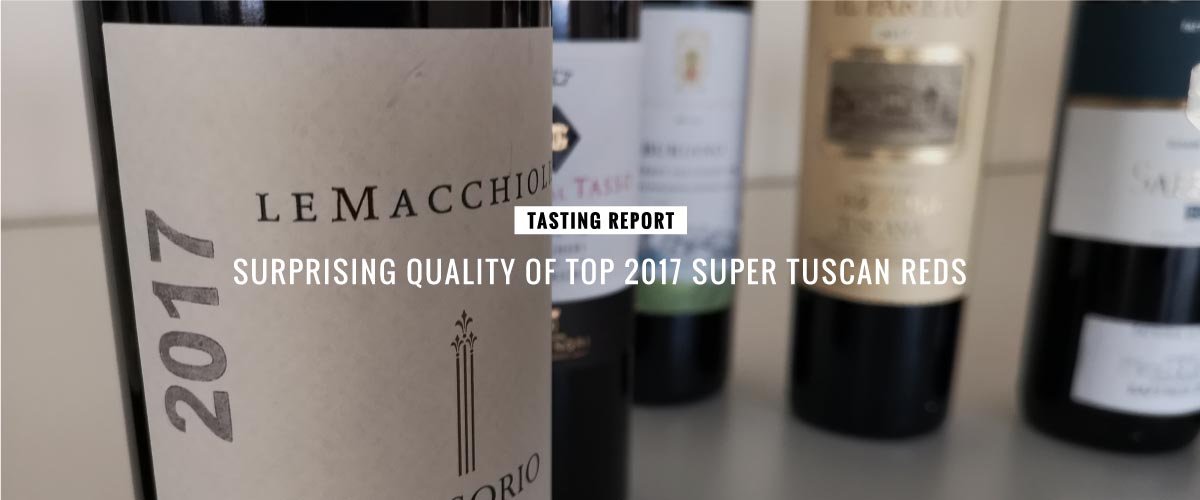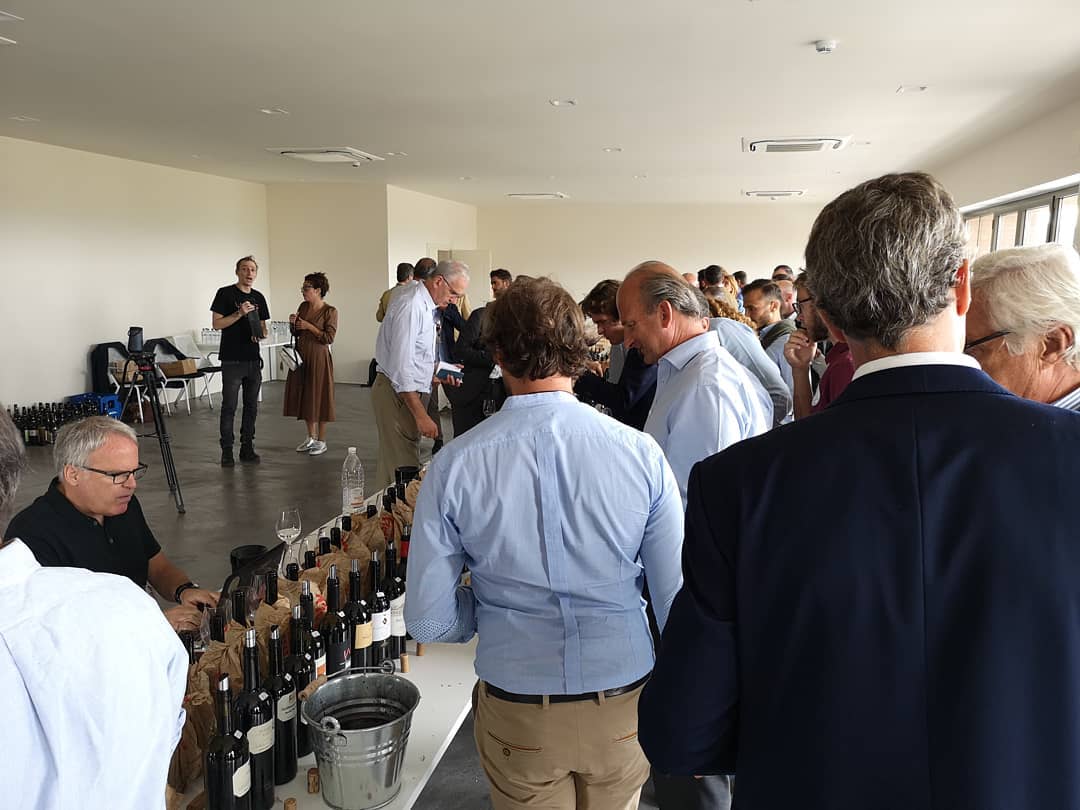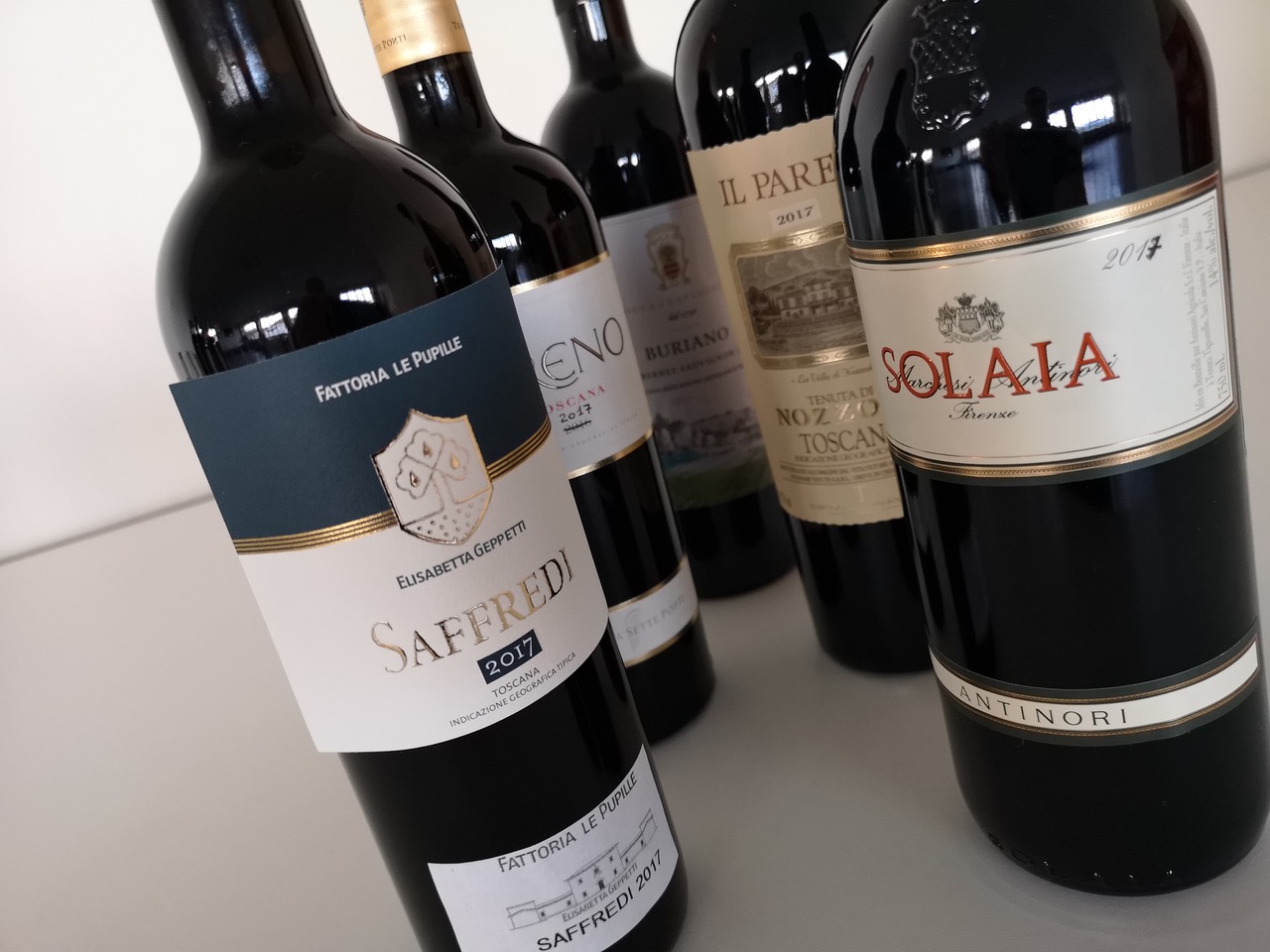

James finishing up his tasting of around 80 Super Tuscan wines from the 2017 vintage, which turned out to be much better than expected.
Surprised is the best word I can think of after rating more than 80 barrel samples of 2017 Super Tuscan reds in my tasting room in Italy on Monday, September 3. Yet I wasn’t the only one in the room thinking the wines would be heavy and alcoholic. The 50-odd winemakers who assembled for our third En Primeur Toscana event were equally thrilled to find few caricatures of a parched and scorching vintage – one of the most extreme in living memory for Italy’s most famous wine region. In fact, most were fresh and structured albeit denser and richer than usual.
“In theory, the wines were not supposed to be like that,” admits Francesco Mazzei of the well-known Florentine wine family. “But I found the tasting really excellent. Particularly great were the cabernets and merlots. In the end, the grapes were beautiful in 2017 as we had the know-how in both the vineyards and cellars to combat the difficult weather.”
I couldn’t agree more. The cabernets, both sauvignons and francs, in addition to merlots, were the standouts of the tasting. They showed impressive intensity and purity as well as a buttress of rich tannins and tension. Conversely, the syrahs seemed a little overdone in most cases and many of the sangioveses lack center palates. Perhaps it was due to their thinner skins, which couldn’t cope with the harsh weather. Most producers agreed that sangiovese was more sensitive to the hellish weather during much of the growing season last year.
I remember vividly last summer flying over Tuscany in a helicopter; that morning, literally thousands of hectares of yellow-tinged vines extended across arid, sunburnt earth between Arezzo and Bolgheri. I wondered to myself how winemakers could make balanced wines in nearly continuous dry and hot weather. Consider that grape yields were down by 20 to 40 percent depending on the area. It was a recipe for jammy wines, or so I thought. Yet the top winemakers of Tuscany seem to have pulled off some kind of winemaking miracle.

These are just a handful of solid 2017 Super Tuscans. Fattoria Le Pupille Maremma Toscana Saffredi 2017 and Marchesi Antinori Toscana Solaia 2017 are both very promising with two-point score ranges above 95 points.
“We understand so much better now how to work in our vineyards and cellars under these conditions,” says Giovanni Manetti, the patriarch of Chianti Classico’s great Fontodi wine estate. “It’s not like past hot and dry years such as 2003 when we were less experienced.”
Other winemakers at the tasting added that the vines seemed to be less affected by the punitive weather in 2017 than in 2003 as they had already become more accustomed to the hot and dry weather earlier in the year. “It was dry and unseasonably hot from the winter onwards, so the vines were less shocked,” explains Barbara Widmer of Brancaia, the high-achieving winery in Radda in Chianti.
Whatever the reasons, the 2017 barrel samples I tasted were if surprisingly high quality. Of course, they will never be the great 2015s or 2016s, but many outstanding wines appear to have been made. I looked forward to tasting them in bottle in a year or two and seeing how they evolve. No doubt some exceptional wines will be bottled.
Please remember that the wines are barrel samples and only examples of what the final blends and bottlings may be. Therefore, as always, I used a two-point score range. — CEO/Editor James Suckling

